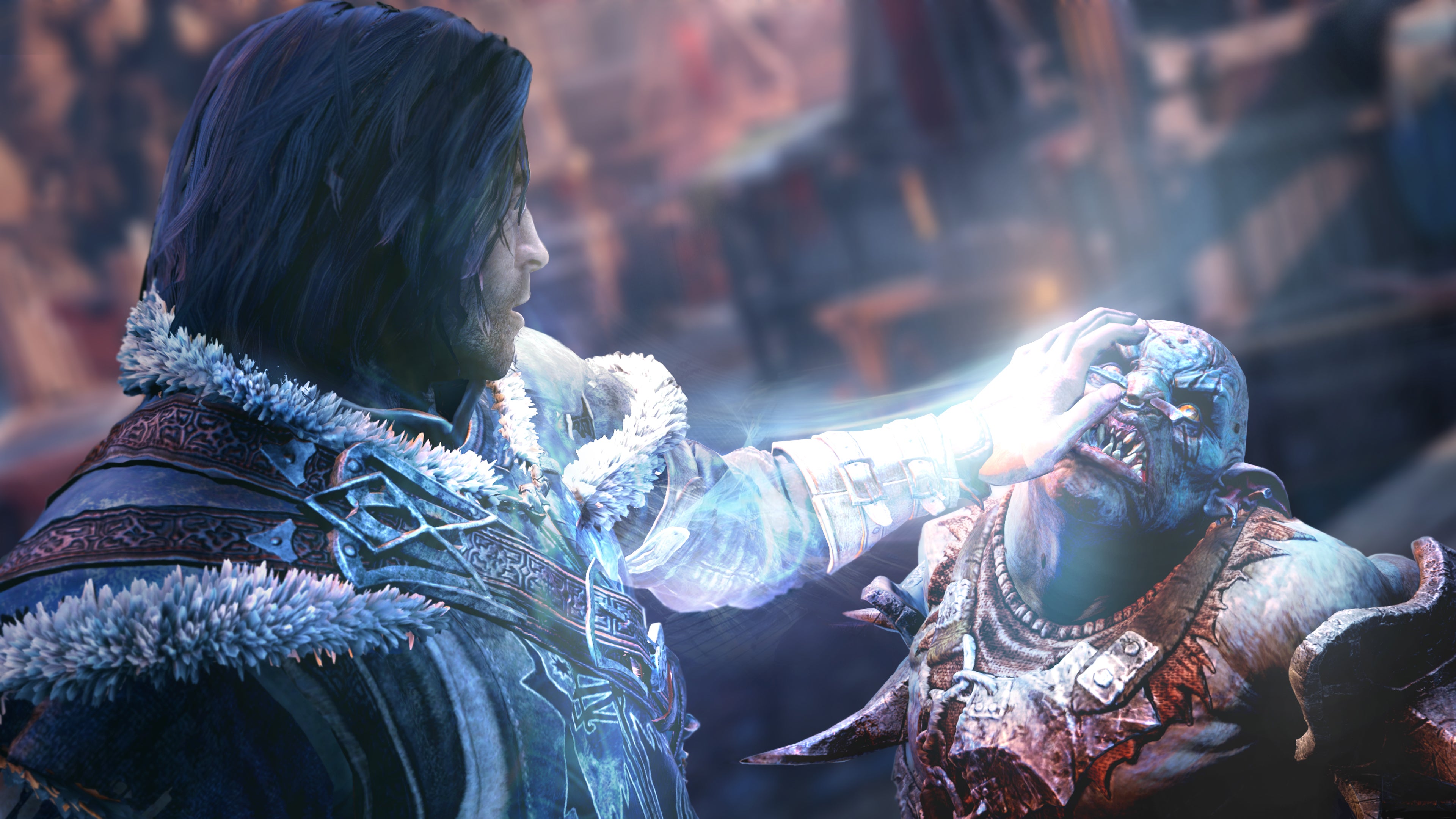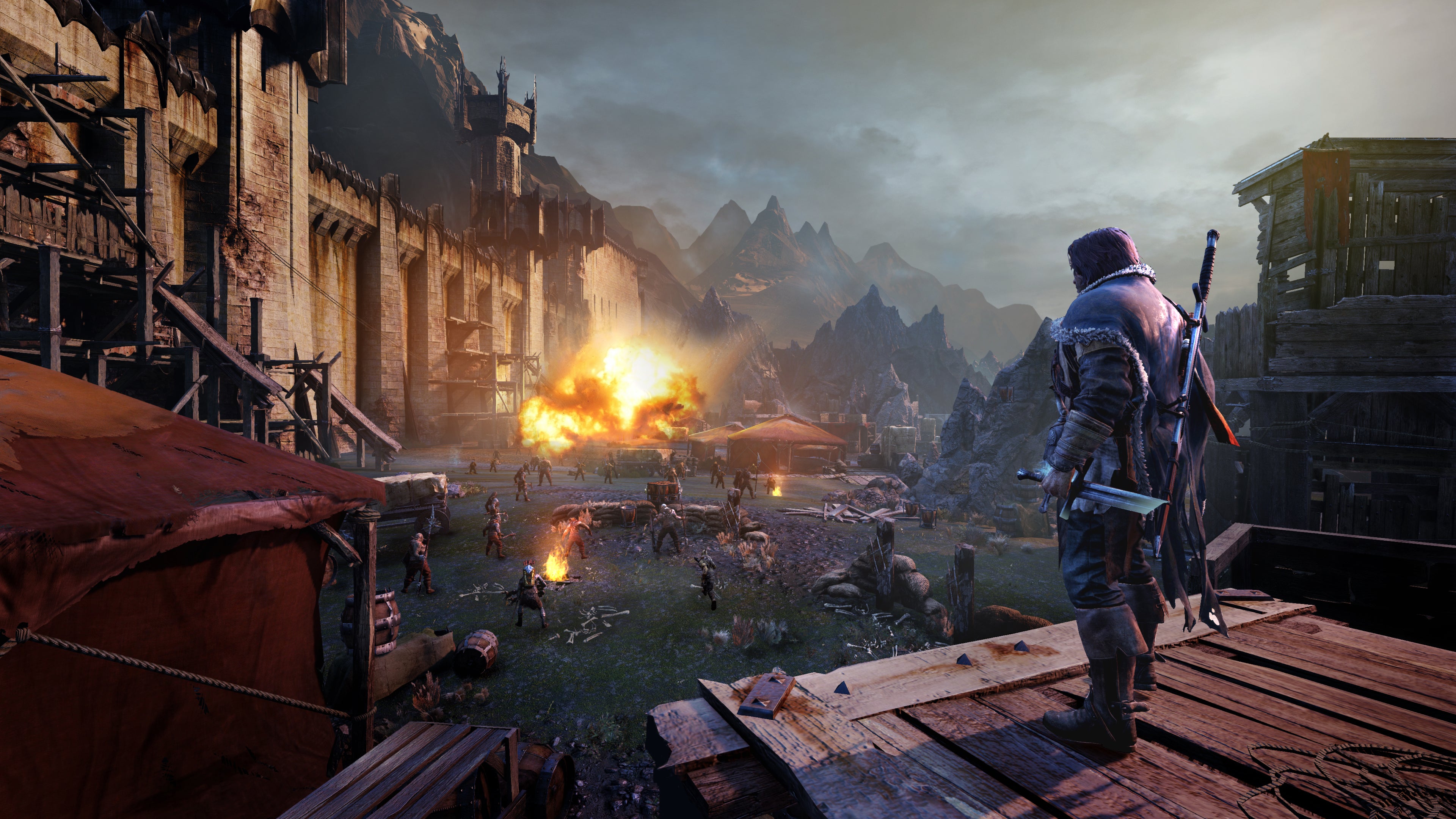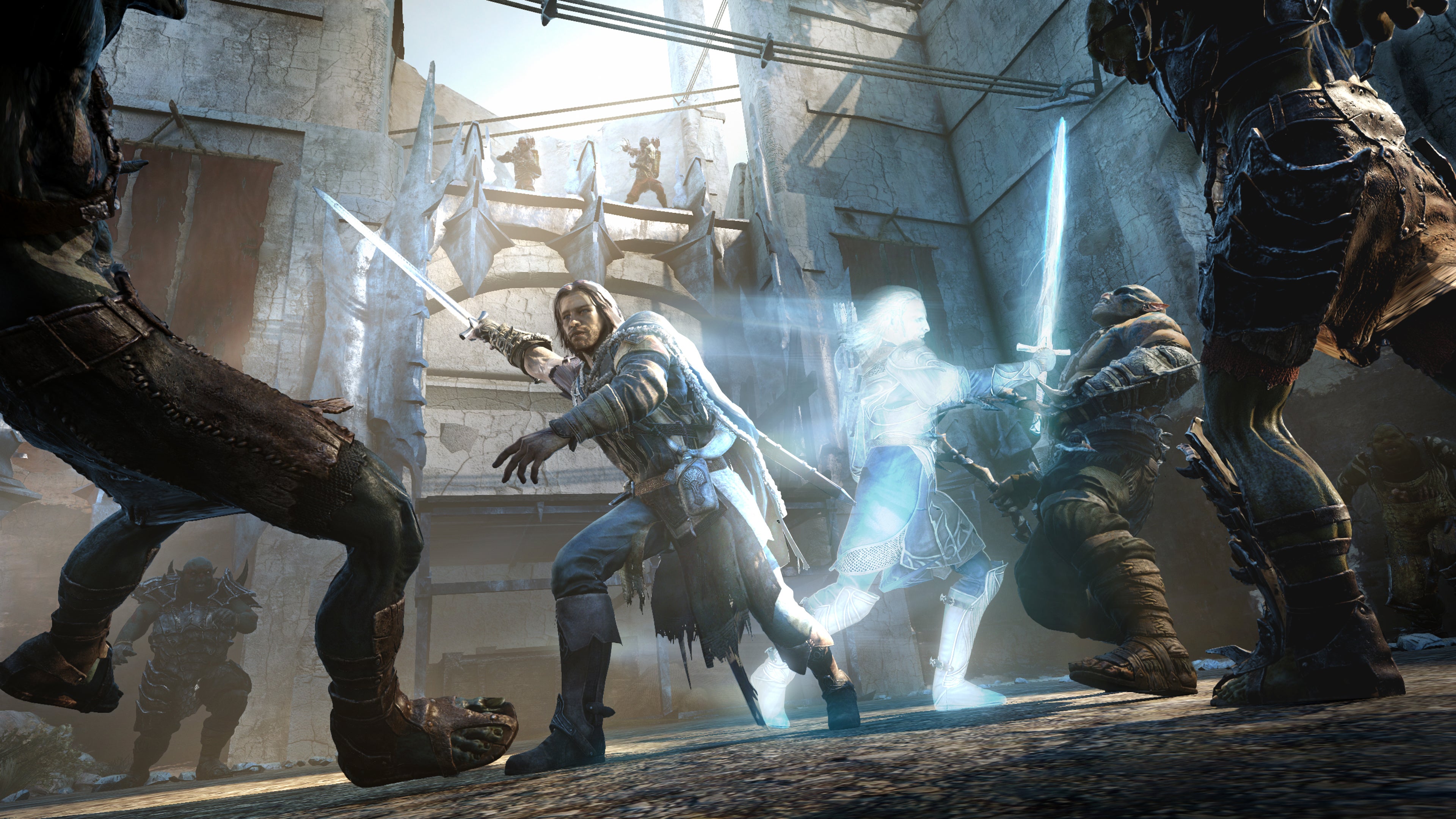But it turns out - and I knew it would - that this is an ideal way to get back into Shadow of Mordor. And Mordor, it turns out, is an ideal game to run around with little sense of what the buttons do. Jump? Roll? Swing a sword? I re-learned all of that afresh while I was on fire, and being chased by wasps. That probably doesn’t sound a lot like Tolkien. That’s fine. Shadow of Mordor isn’t The Lord of the Rings or the Hobbit. It’s not a grand finale. It’s not there-and-back-again. Instead it’s an endless pubfight, the game that brought hilarity to Middle-earth. This probably sounds like sacrilege. So be it. True story here: my mum, who is a proper Tolkien fan, still clinging to her classic 1970s copy of Lord of the Rings with Tolkien fairly stamped on the spine in caps, was once staying with us when Shadow of Mordor was first out. She watched one morning, stirring a cup of tea with mounting anger as I clambered over walls, shivved orcs and accidentally set myself on fire. After a while, she said, “What is this absolute bullshit.” No question mark. Then she stomped off to find a biscuit. So what is this absolute bullshit. It’s one of the most joyful games ever made, actually, and one of the most brilliant reinventions of what a license can be - a turning out of the license really: what’s in its pockets? What’s stuffed up its sleeves? But it didn’t look like that at first. At first, in the slow crawl to its release, Shadow of Mordor looked like a police photo-fit of everything triple-As were at the time. Parkour and huge maps littered with icons from Assassin’s Creed. Climb towers. Collect herbs. Tick things off. And then when it comes to fights, how about a bit of the Arkham games? The same flow-based combat, the same two-button specials that steadily do your hand in, the same flurrying beat-down move and the same hop-over-the-armoured-fellow business. Just with a bit more swordfighting, because it’s Tolkien, with a bit more head-popping when it comes to the finishers, because Batman isn’t down with that stuff. That sounds like an awful, cynical Frankenstein game. And it is absolutely those two series, Arkham and Assassin’s smushed together. But it’s not awful or cynical. It’s brilliant and funny. It’s memorable - even if the things you’re remembering at the end of it have nothing to do with Merry and Pippin and that guy who goes out every night and turns into a bear (just me?). This is because at the heart of all these borrowings is something fresh. Mordor drops you as a ranger into a world filled with Orcs. It’s Orcs: The Video Game, which is a pretty wonderful pitch, because orcs are always a delight. You turn up, and your job is to steadily do orcs in until there are no orcs left to do in. You climb through the hierarchy until all the notable orcs are puddles around you. And yet! That hierarchy responds! This is the genius of Shadow of Mordor, its own clever thing that other games would try to rip off and inevitably ruin. The nemesis system. What a system! When you play Shadow of Mordor and tool around its open-world, the game builds that hierarchy of orcs around you, with the leaders at the top and the grunts massed below them. But this hierarchy is dynamic and responsive. And a lot of what it responds to is you. And by that I mean all the times you screw up. It’s like Gyromancer, but with headbutts. If you’re in a fight and an orc kills you, as you die you get to see them promoted. Up the chain they go - maybe they get a few traits. Maybe they get a new piece of armour bolted into their face. Maybe they kill you again and travel higher. Maybe they end up as one of the top orcs out there, and it’s all because they kept killing you. But as they killed you, you got to learn about them, their strengths and weaknesses. And maybe that makes them easier to eventually take down. Two things to know about the nemesis system. Firstly, it’s very cool and very complicated - and it’s going on around you all the time. Promotions, new traits, this guy’s now afraid of boars, this other guy’s now brilliant with arrows - shame he’s still afraid of boars. Secondly, and this is the important thing, what the nemesis system really means is that everyone’s shoelaces are now tied together. Stumbles and flails now ripple across the entire orc world, changing the landscape, promoting, depromoting, shuffling. It’s all connected. To put it another way: when I think of Shadow of Mordor, I tend to picture an endless middle act. One big fight in a Mordor school playground. But that’s not quite right is it? There are mission chains, a map almost comically busy with things to do, character upgrades, weapon upgrades, all that jazz. Do I want to learn how to do a spooky stun move by punching the ground? Do I want a sword that sets people on fire or a sword that heals? I can have both and more - and the same for the bow, the dagger. But regardless of all this, what emerges is a game that I still play as an endless middle act. This is why it’s such a great game to dive back into after all that time: wherever you are in the plot, the next thing you’re going to want to do is punch some orcs. It’s just a question of deciding who. And that nemesis system is there to help daisy chain one small fight into an endless, rolling, landscape filling brawl. A brawl to rule them all, I guess. I start by picking off a few archers, maybe. Then I miss one. Somebody blows a horn and then - oh heck, the camera zooms in and who’s this? Readers, it’s only Rug the Vile. It is Rug the Vile with cold yellow eyes and what looks like the business end of a leopard clamped to his head as a kind of naff toothed beanie. Real talk: at this point I cannot remember Rug the Vile at all. You think he would be hard to forget, yet there it is. But anyway - he remembers me. Back in 2017 when I last loaded up Shadow of Mordor, I clearly wronged Rug the Vile. Or righted him. Or something. Anyway, he wants to join the fight and do me in himself. But then the fighting pauses again, the camera zooms. And here’s Krosh Ghul Slayer, with a weird aspect of CBBCs puppet Hacker T Dog to his evil face. He really hates me, cockers! But before he can leap in, the camera zooms again and Gorgum Flesh Glutton is here. The traditional spelling, as Frasier might put it. This can go on for a hilariously long time - these sort of family reunion brawls that Shadow of Mordor is perfectly calibrated to churn out. And it’s brilliant. It’s funny enough that a bunch of orcs I can’t remember seem to have very specific beefs with me, but then you throw in the pratfalls of the combat, the endless intrusions of the UI alerts - there’s an animal nearby I should track! A herb I should pick! Maybe I fancy climbing a tower? This should be a game that fragments into parts, into borrowings - I’m sorry, Rug the Vile, but put down your flaming mace for a second while I collect some delicate samphire - yet of course it never does. Because ultimately it’s all just about fighting orcs. Not just that. I now see it as kind of a menu of orc fights, one of those big menus with lots of choices: what kind of salad in your sandwich? What kind of bread? What kind of sauce? That’s it: Mordor is the Subway of Lord of the Rings, every system either asking what do you want to be - what kind of damage do you want your sword to do? - or asking who do you want to be fighting? The big boss: do you want them afraid of wasps or so sodden with booze that they explode by accident when they cough? Southwest sauce on that? (Obviously.) Gosh, this does a lot for a game. At the time, a lot of people talked about how Mordor’s world was just a huge muddy brown rugby pitch. They talked about how the hero looks like a bit part from an off-list BBC spy drama and how he sort of staggers forward across the ragged landscape, like a dad bravely battling headwinds on his way back from a Spar. (Troy Baker did the motion-capture; half the time it looks like I did it.) But none of this matters. Because Shadow of Mordor knows that sometimes you just want to be fighting orcs. And it knows that fighting orcs should be really, really entertaining.


